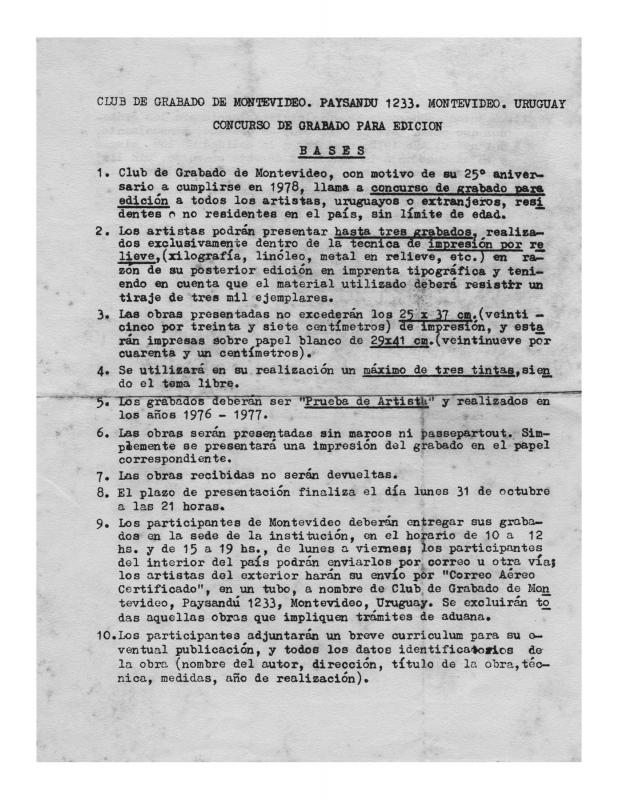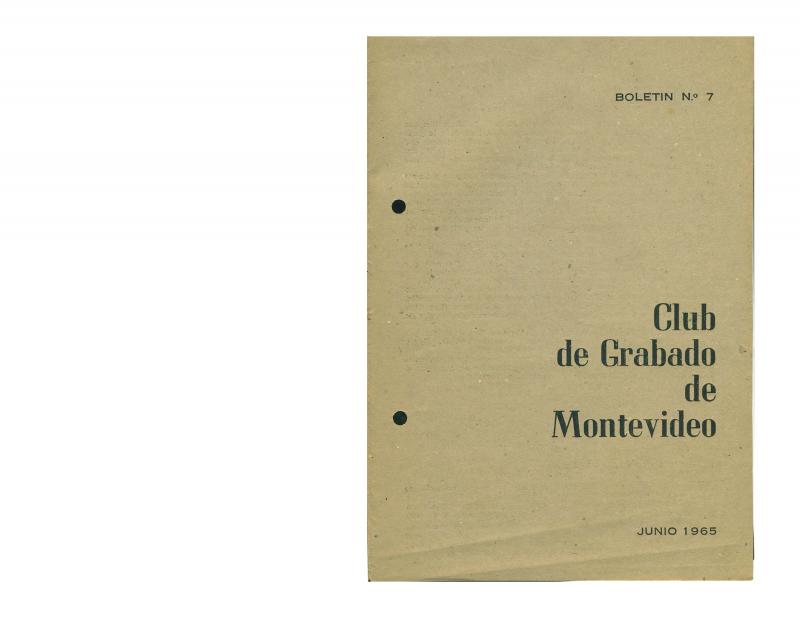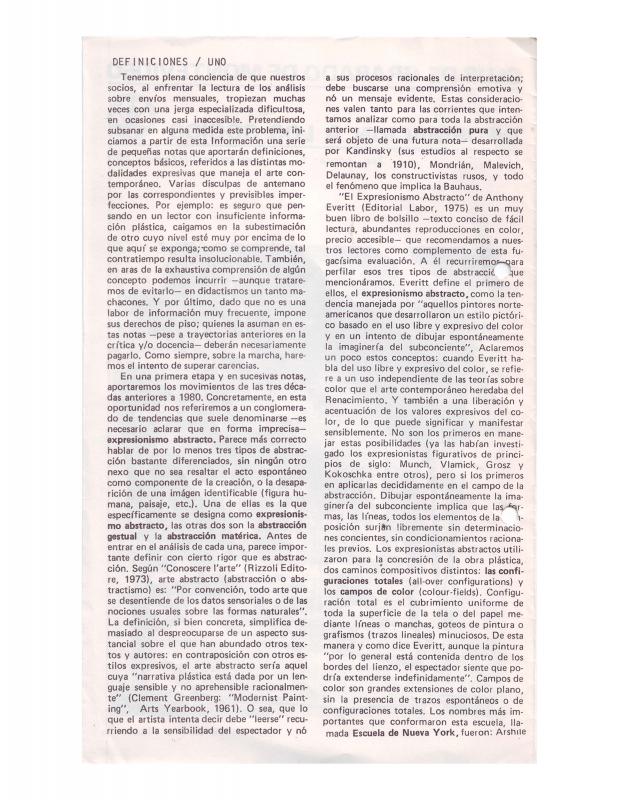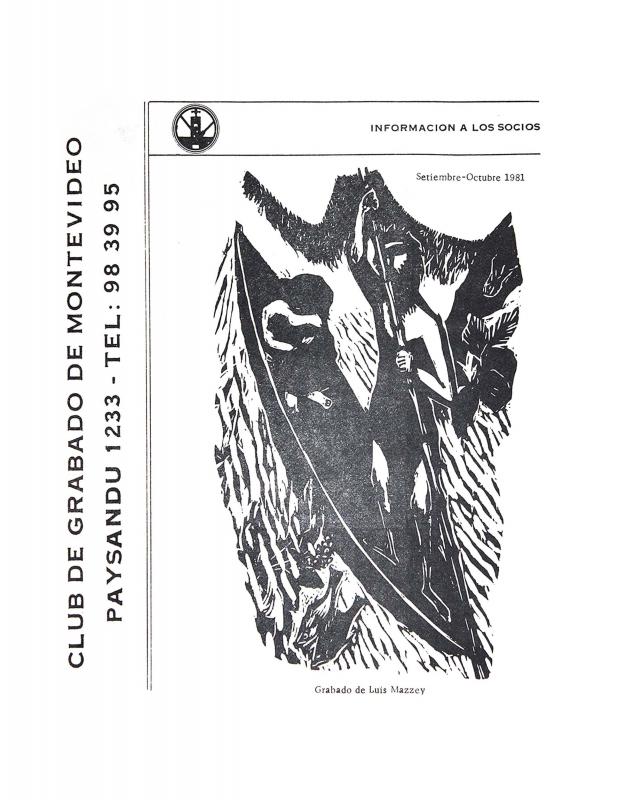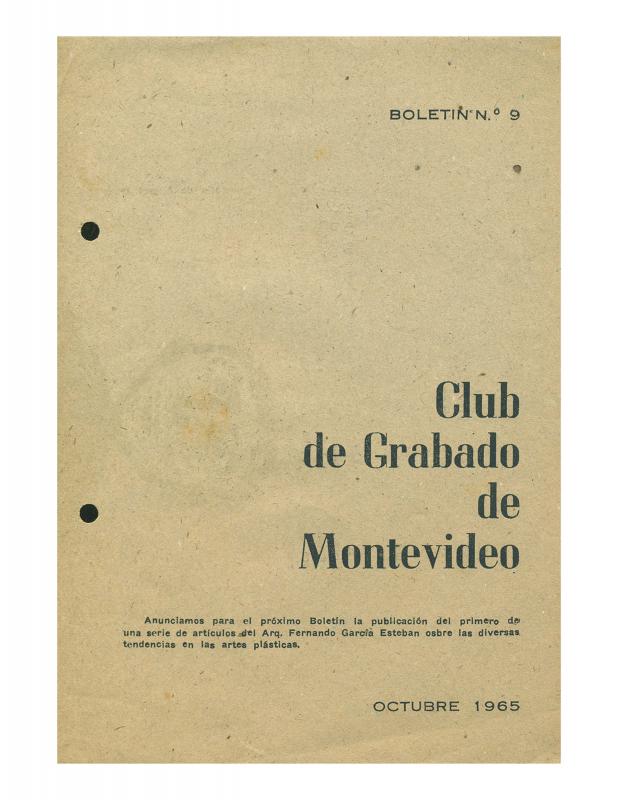The Club de Grabado de Montevideo started publishing its Boletines in 1964. Publication of the newsletters ceased in 1975, but started again in 1980. Boletín Nº 21 (1984) included some articles that discussed the CGM’s critical cultural situation in the 1980s [on that subject, see in the ICAA digital archive by Olga Larnaudie “Unas pocas reflexiones y muchas interrogantes en torno a las Artes plásticas en el Uruguay de los últimos años” (doc. no. 1185426)]. In this article, the architect, curator, and art critic Gabriel Peluffo (b. 1946) addresses the CGM’s institutional situation in the late 1970s and early 1980s. At that time the old artist-public community had disappeared, as had the utopian political policies that had supported it in the 1960s. Cultural activities were banned and cultural institutions were disbanded following the coup d’état in 1973, but the repressive, dictatorial regime it installed eventually led to a flowering of democracy a decade later, at the time of Peluffo’s writing. The CGM’s original goals were no longer relevant in the political and cultural circumstances of the mid-1980s, when the visual arts (and especially the graphic arts) became harbingers of a “shattered cultural life.” The list of factors contributing to that shattered life seems endless and hard to correct, such as the lack of production, the lack of spaces in which to hold theoretical discussions, the absence of local artists who had been driven into exile, the commercial diversion of the few works in circulation, the disappearance of the ENBA (Escuela Nacional de Bellas Artes), etcetera, etcetera. All these factors helped to create the cultural limitations and programmatic void that affected the CGM, one of the few cultural institutions that managed to survive the military coup. In his article, Peluffo suggests that only a radical restructuring of the entire atrophied cultural environment could lead to an internal reorganization of the CGM. The fundamental challenge facing the Club’s members was either to radically change their original program (that was limited to printmaking) and reinvent their association as an educational or training institution, or to languish in nostalgic, irrelevant nostalgia. [As complementary reading, see in the archive the following articles published by the Club de Grabado de Montevideo: “Concurso de grabado para edición” (doc. no. 863481); “13 años de actividad de Club de Grabado de Montevideo” (doc. no. 1183571); “El arte correo en el Uruguay” (doc. no. 1191850); “Boletín N° 7 Club de Grabado de Montevideo” (doc. no. 1182833); “Club de Grabado compra su casa” (doc. no. 1192649); “Club de Grabado de Montevideo 22 Aniversario 1953 - Agosto 1975” (doc. no. 1183514); “Club de Grabado de Montevideo a la población de Montevideo” (doc. no. 1183124); “Cuando el Tercer Mundo se mira a sí mismo. II Bienal de La Habana” (doc. no. 1184459); “De los grabados de ayer a las ediciones actuales” (doc. no. 1191787); “Definiciones / Uno” (doc. no. 1189065); “Entrevista a Luis Mazzey” (doc. no. 1186991); “Entrevista a Óscar Ferrando” (doc. no. 1186747); “Entrevista a Óscar Ferrando [segunda parte]” (doc. no. 1186802); “Fundamentos a propósito de su 22 aniversario” (doc. no. 1182640); “Mini Grabado Internacional de Cadaqués. España” (doc. no. 1191135); “La necesidad de la imaginación” (doc. no. 1190793); “Nuestra institución” (doc. no. 1182010); “Los nuevos movimientos de las artes” (doc. no. 1182868); “Opiniones (I)” (doc. no. 1185411); “Palabras de clausura para un año de apertura” (doc. no. 1191167); “Referencias sobre identidad, cultura y arte en Latinoamérica” (doc. no. 1183641); “Reflexiones en torno a la supuesta crisis de las artes plásticas” (doc. no. 1185539); and “Sobre el papel de la crítica” (doc. no. 1187071)].


